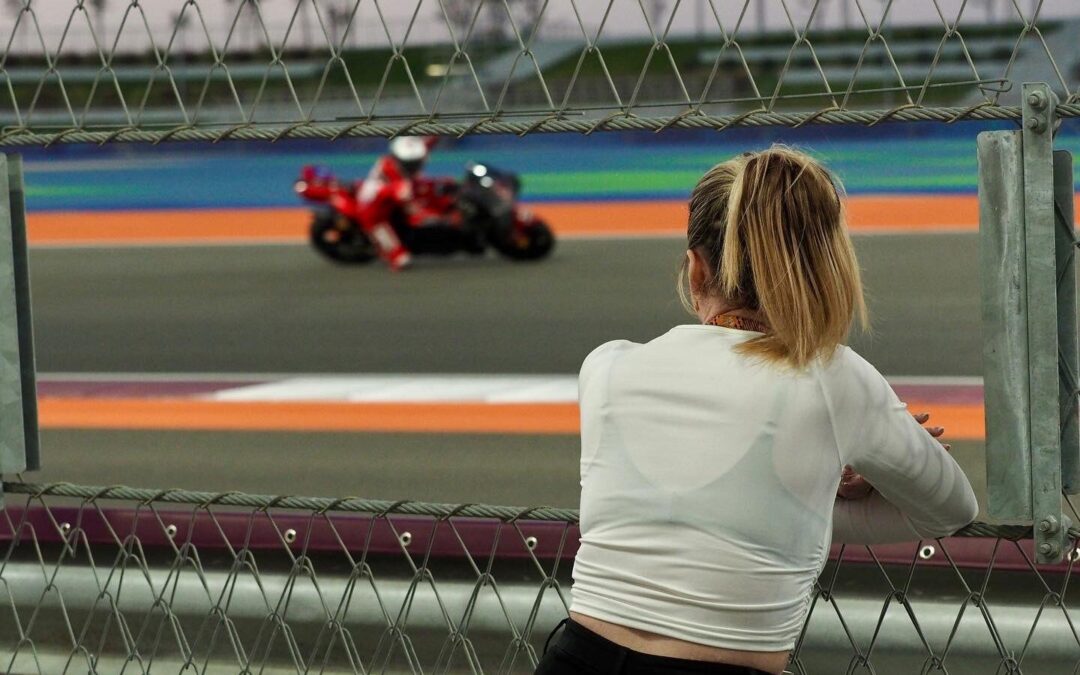Back in 2020, Australia’s Maddi Patterson was sharing a house with her friends in Adelaide when she suffered an injury that would change her journey within motorsport. After an accident with a fire pit, 60% of Maddi’s body was burnt. The horror accident left Maddi needing to learn how to walk again.
Prior to her accident, Maddi balanced working in sales with working as a ‘grid girl’ for the World Superbike Championship. To many, a fire accident would lead you to spend the rest of your life avoiding the fire-hazards of motorsport.
Not Maddi Patterson.
“It (recovering from the fire) was truly horrible, I went through the suicidal phase,” Maddi says. “I fell out of love entirely with motorsports. I didn’t want anything to do with it. But then gradually, as I started to get better, I started to fall back in love with it again.
“I went back to work at the Australian Superbikes Championships, and I was welcomed back. People were happy to see me and the wonderful thing about motorcycle racing is, as horrible as it can be, everyone has a few scars, but I still felt really welcomed.
“From then I knew this was the home for me and I think my accident actually propelled me towards it.”
Since recovering, Maddi Patterson has become the founder, owner, and team principal of Sekhmet International Motorcycle Team. Maddi set up this team with a clear goal: helping women enter the sport she loves.
“The objective at the start was clear and that was to challenge the status quo. And in terms of getting women involved, young people are always my focus,” she says.
“I wanted to show people that you can create opportunities for yourself when you think that there are no options. It is hard, but it is possible. So if I can create a platform for people to come and grow, for me that’s really exciting.”
The name for her team was suggested to her by a friend over a coffee, as she joked that Madi reminded her of ‘Sekhmet’; the Egyptian mythological goddess of war who was born from fire. Madi instantly felt an affinity to this name, and she knew that would be her team’s name.
Sekhmet will soon debut at the inaugural FIM women’s Motorcycling World Championships, in mid-June this year. Additionally, Patterson has recently formed a digital marketing agency, PHNX, working across a variety of industries including motorcycling.
Despite all this truly inspirational work, many still focus on Patterson’s earlier years in the sport.
“As someone who started their motorsport career in promotional modelling, it’s been very hard to shed the idea that I exist only to make a motorcycle or the guy riding it look good.
“Something I am often told is that women are there to add glamour to the sport. I’m not quite sure what that means outside of being pretty to look at.”
A study by More Than Equal explored reasons for the gender gap in motorsports in 2023. They found that 70% of the females asked in the survey agreed that Media stereotyping deters women from aspiring to the elite level, whilst 20% of males agreed with this sentiment.
Patterson’s experience is not a strange one, women have always had to prove that they are more than just a ‘pretty face’ whether that be in the driver’s seat or in the paddock changing tyres.
This preconception is arguably fuelled by much of the marketing that females who find success in motorsports receive. Such marketing which focuses on their physical attractiveness rather than admiring their abilities. A classic example of this is how Helle Nice was represented. One of the most famous women in motorsports history, she became the fastest female in the world all the way back in 1929, recording 120mph as her fastest lap. This achievement which has since inspired a book, The Bugatti Queen, a title which was also her nickname.
A catastrophic crash in 1936 at the Brazilian Grand prix left her in a coma and killed six people. But, Nice made a miraculous recovery within three days and made her racing return just a year later. Nice went on to break ten records in the Yacco endurance trials at Montlhéry.
Despite this, much of the publicity she received relate to potential relationships she was involved in. Todd Mccarthy, author of Fast Women: The Legendary Ladies of Racing, said: “She became known as a racer who readily slept with anyone who may advance her career.”
Almost a whole century has passed since Nice’s time and yet women are still often subject to similar representations in the field of motorsports. Whilst it may not be quite as overt and clear as in Nice’s day, these depictions still exist and hinder many women from being taken seriously, instead being viewed as mere eye candy to look at and admire.
Maddi Patterson should act as an inspiration for young women who feel the urge to begin their journey within motorsport. It’s not about appearance, it’s not about your gender. When the helmet goes on, and the lights go out, only talent and commitment can win you the race.

